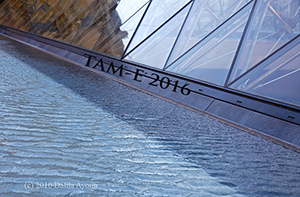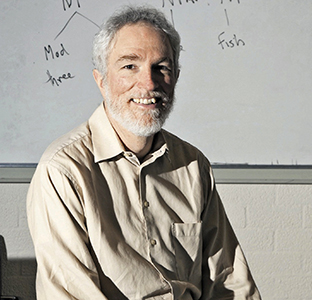William CroftThe aspectual potential of verbs and lexical semantic typology William Croft University of New Mexico In Verbs: Aspect and Causal Structure (2012), I presented a two-dimensional analysis of aspectual semantics. In that book, I argue for a two-dimensional model of aspectual meaning, in which aspect is defined as how events unfold over time. The unfolding is modeled by a temporal dimension and a qualitative dimension which represents the changes (if any) that occur over the course of the event. A second, equally important characteristic of this analysis of aspect is that a verb may be construed as having different aspectual types depending on what tense-aspect construction it occurs in. This process results from an interaction between constructional meaning and lexical meaning. Thus, verbs do not belong to a single lexical type. Instead, they have an aspectual potential to be construed in a certain range of aspectual types. There is a great variety in the aspectual potential (range of aspectual construals) of different predicates. There are nevertheless common patterns. In Verbs, I used a multidimensional scaling analysis of the aspectual potential of 44 English predicates and their Japanese translation equivalents to construct a model of pairs of related aspectual construals. One can go beyond this analysis and look at verb classes with more than two potential aspectual construals. In this talk, I argue that by doing so, we can characterize the manner vs. result verb distinction of Levin and Rappaport Hovav, the verb-framing vs. satellite-framing distinction of Talmy, and other typological differences in the verbal lexicon, in terms of different aspectual potentials of verbs and verb classes across languages. Short biography: William Croft received his Ph.D. in 1986 at Stanford University under Joseph Greenberg. He has taught at the Universities of Michigan, Manchester (UK) and New Mexico, and has been a visiting scholar at the Max Planck Institutes of Psycholinguistics and Evolutionary Anthropology, and at the Center for Advanced Study in the Behavioral Sciences. He has written several books, including Typology and Universals, Explaining Language Change, Radical Construction Grammar, Cognitive Linguistics [with D. Alan Cruse]and Verbs: Aspect and Causal Structure. His primary research areas are typology, semantics, construction grammar and language change. He has argued that grammatical structure can only be understood in terms of the variety of constructions used to express functions across languages; that both qualitative and quantitative methods are necessary for grammatical analysis; and that the study of language structure must be situated in the dynamics of evolving conventions of language use in social interaction. |



